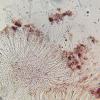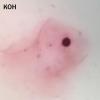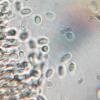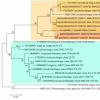
09-12-2025 12:06
 Andgelo Mombert
Andgelo Mombert
Bonjour,Je recherche l'article concernant Hypobryo

07-12-2025 16:07
Arnold BüschlenHallo, ich habe in einer Moos-Aufsammlung (epiphy

08-12-2025 21:04
Mark Stevens"Hello everyone,I'm relatively new to microscopy (

08-12-2025 18:59
 Lothar Krieglsteiner
Lothar Krieglsteiner
.. found by a seminar-participant, I do not know t

08-12-2025 17:37
 Lothar Krieglsteiner
Lothar Krieglsteiner
20.6.25, on branch of Abies infected and thickened

16-03-2014 22:00
Hello,I found this species a few months ago but ha

08-12-2025 13:39
Thomas Læssøehttps://svampe.databasen.org/observations/10572899
Dark red discomycete on Betula - nematode trapping anamorph?
Ethan Crenson,
12-11-2024 16:43
Hello all,
This weekend a friend found these dark red cups on the cut end of Betula in the Northeastern US (Maine). In the field they appeared very dark, almost black and associated with a dark staining in the wood. Illuminated in the lab they appear dark red, quite small, the largest reaching about 0.25mm in diameter.
Spores: hyaline, clavate, 10-12.7 x 2.2-2.5µm, with one oil droplet at each end.
Asci: 46-55 x 6-7µm, IKI-
Paraphyses: narrow, usually curved at the ends
Red pigments in the form of an epithecium above the hymenium
An interesting synnematous anamorph that is growing with this disco appears to be trapping nematodes. There is also a black immersed pyrenomycete and another, light colored discomycete growing together with these dark red ascos, so it is possible the synnemata could be associated with either of those.
Does anyone have any ideas about this?
Thank you in advance,
Ethan
Hans-Otto Baral,
12-11-2024 17:09

Re : Dark red discomycete on Betula - nematode trapping anamorph?
Hi Ethan, my god!! This is a new genus and family to which also a very long. and multispored species belongs. It reminded me of Cordieritidaceae but its placement is very special, according to sequences obtained by Adam. The only described species related to them is Claussenomyces tympanoides, which is misplaced there.
Now this specimen should be sequenced I think, since we have two such species with different ITS and slightly different spore size. Would it be possible to send it to Adam? I am sure he would be happy.
You do not have a scale to your photos? I much appreciate that to be able to measure myself.
Ethan Crenson,
12-11-2024 17:37
Re : Dark red discomycete on Betula - nematode trapping anamorph?
Hello Zotto! Thank you for the information. That is very exciting! I would be happy to send a portion of the collection to Adam. I am drying some apothecia now to attempt a sequence for myself.
I tested the tissue in KOH and extracted red pigments. It is ionomidotic, I assume. I also made some images of the synnemata. All posted below.
I will measure and do a more thorough documentation this afternoon.
Thank you again!
Hans-Otto Baral,
12-11-2024 17:47

Re : Dark red discomycete on Betula - nematode trapping anamorph?
Ah, you want to sequence yourself! That would be sufficient!!
Yes, ionomidotic. The photos are in a new folder starting with 3f in Helotiales.
The anamorph could be Graphium caliciioides?
Ethan Crenson,
13-11-2024 18:39
Re : Dark red discomycete on Betula - nematode trapping anamorph?
Here are some photos with scale. Apologies for the poor quality.
Hans-Otto Baral,
13-11-2024 20:51

Re : Dark red discomycete on Betula - nematode trapping anamorph?
Thanks! Your spore photos are fine but I never saw photos with such an enormously high empty magnification. You keep this "resolution"? Downsizing to 25% results in a reasonable size.
I measured the spores as *8.5-12.7 x 2-2.5 µm, so encompassing also shorter and a bit narrower spores than you gave.
Could you please give me the date (10.XI.?) for naming the pics.
Adam Polhorský,
13-11-2024 22:12
Re : Dark red discomycete on Betula - nematode trapping anamorph?
Hi Ethan, nice find! Your measurements fit for the "uncinata" species, but all collections we have are from Europe. It would be valuable to compare if you are successful with sequencing.
These fungi commonly grow with other species which is not unusial for lignicolous species.
Only once I've seen an associated pycnidial anamorph which could be connected to the teleomorph (it had the same ionomidotic pigments). It is difficult to search for because it resembles primordia of the teleomorph. So I think your anamorph is unrelated.
Adam
Ethan Crenson,
14-11-2024 05:16
Re : Dark red discomycete on Betula - nematode trapping anamorph?
Zotto...Yes, sorry about the empty magnification. I'm without my better microscope right now.
The collection data is: collected by Juniper Perlis on Betula, Wolfe's Neck, near Freeport, Maine (43.821273, -70.084749), on November 9, 2024.
I will update my notes on the spore size.
Adam...thank you for your comments. I saw what could have been the pycnidia you refer to, but I didn't investigate further. It might also have been an unrelated pyreno (teleomorph).
Hopefully my sequencing will be successful.
E
Ethan Crenson,
19-11-2024 07:14
Re : Dark red discomycete on Betula - nematode trapping anamorph?
Hello Adam and Zotto,
I just received a sequence which looks very good. An initial BLAST of it has resulted in the top 4 matches "Helotiales sp." with voucher codes beginning SNMM31 but with a similarity around 93-95%. Can send the ab1 file to you or...?
Ethan
Hans-Otto Baral,
19-11-2024 10:30

Re : Dark red discomycete on Betula - nematode trapping anamorph?
Great! Yes, please send to zotto@arcor.de
SNMM31_1 is Ionopatella uncinata, so yours is obviously not I. uncinata. Could it be subuncinata? But that has only 2.5% to uncinata, not 5%!
SNMM31_1 is Ionopatella uncinata, so yours is obviously not I. uncinata. Could it be subuncinata? But that has only 2.5% to uncinata, not 5%!
Hans-Otto Baral,
19-11-2024 22:09

Re : Dark red discomycete on Betula - nematode trapping anamorph?
Now I have worked on the sequences which was a bit dirty at one end. A small ML tree below. The Resinomyces clade (I believe) was obtained by Blast. So this sequence offers new speculations. Strange is that it is closer to multiseptata with its very long spores.
I added a better resolution below.
















 SporesM-7144-0001.jpg
SporesM-7144-0001.jpg
